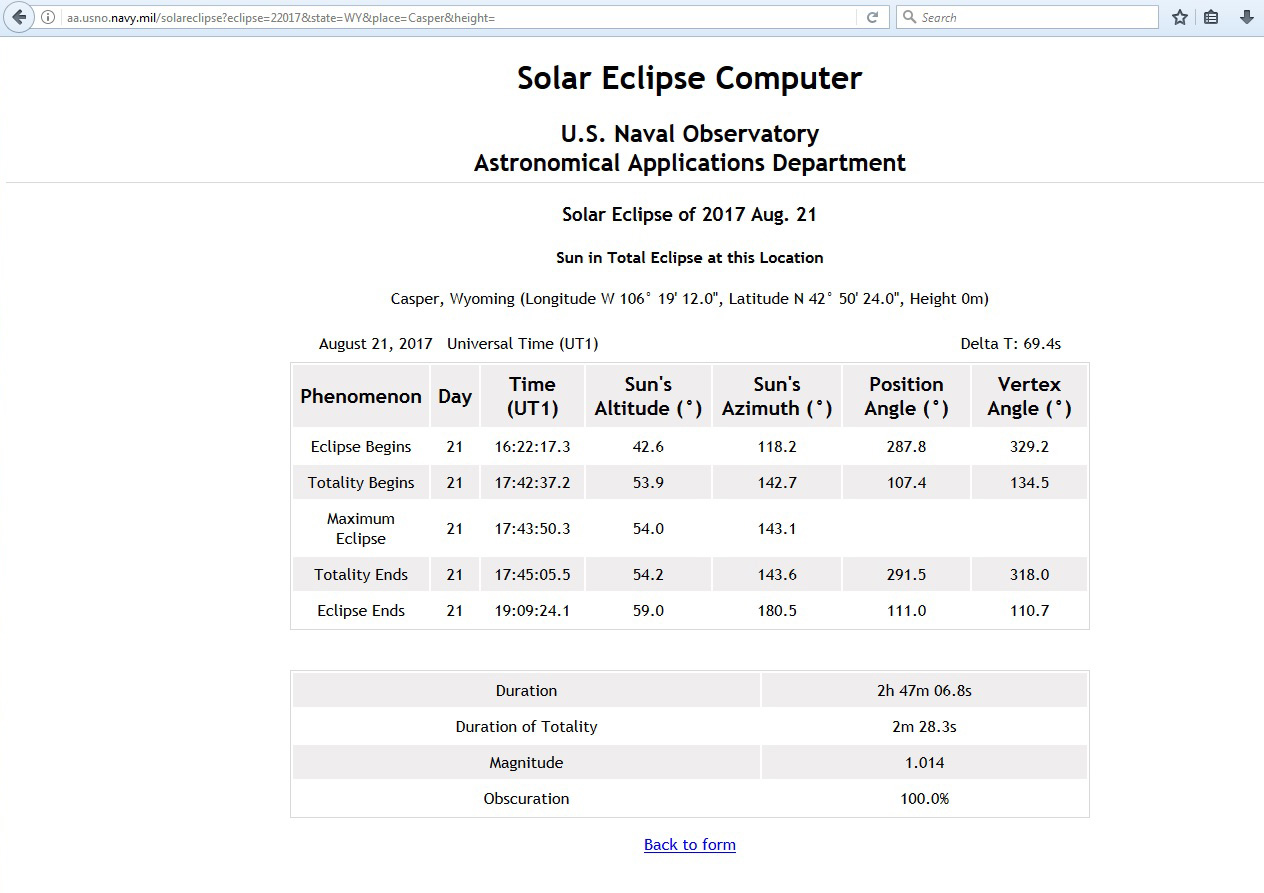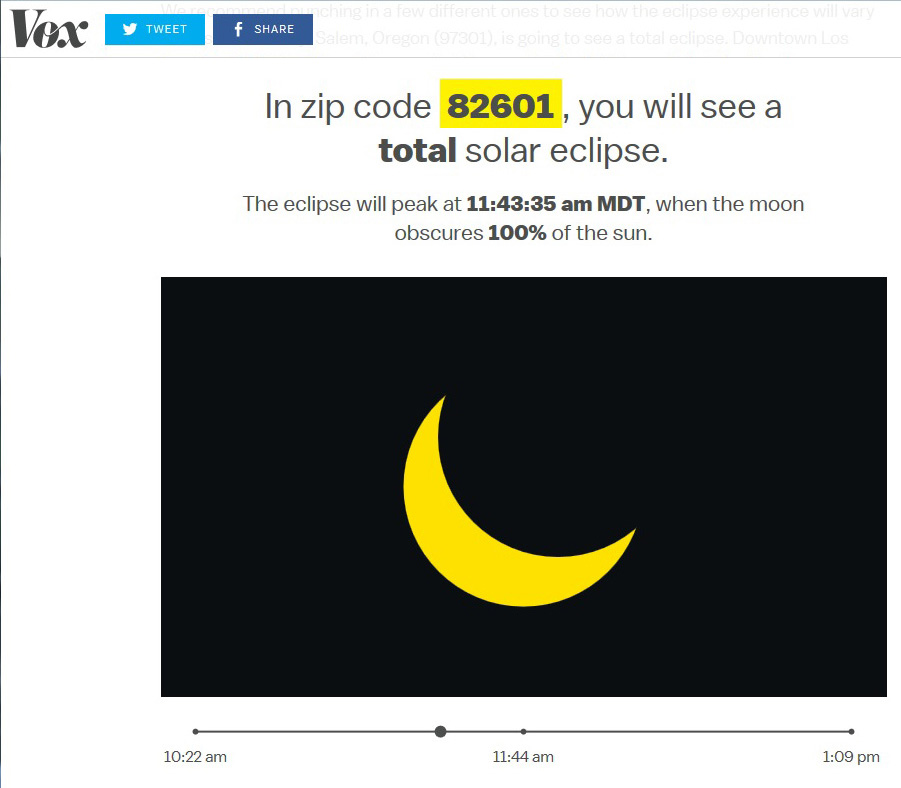 If you want to know when the Great American Eclipse begins, reaches totality, and ends from the location of your choice, you need a local eclipse calculator. This article shows you two simple calculators and one GPS calculator.
If you want to know when the Great American Eclipse begins, reaches totality, and ends from the location of your choice, you need a local eclipse calculator. This article shows you two simple calculators and one GPS calculator.
Click on any of the illustrations below to see a larger version.
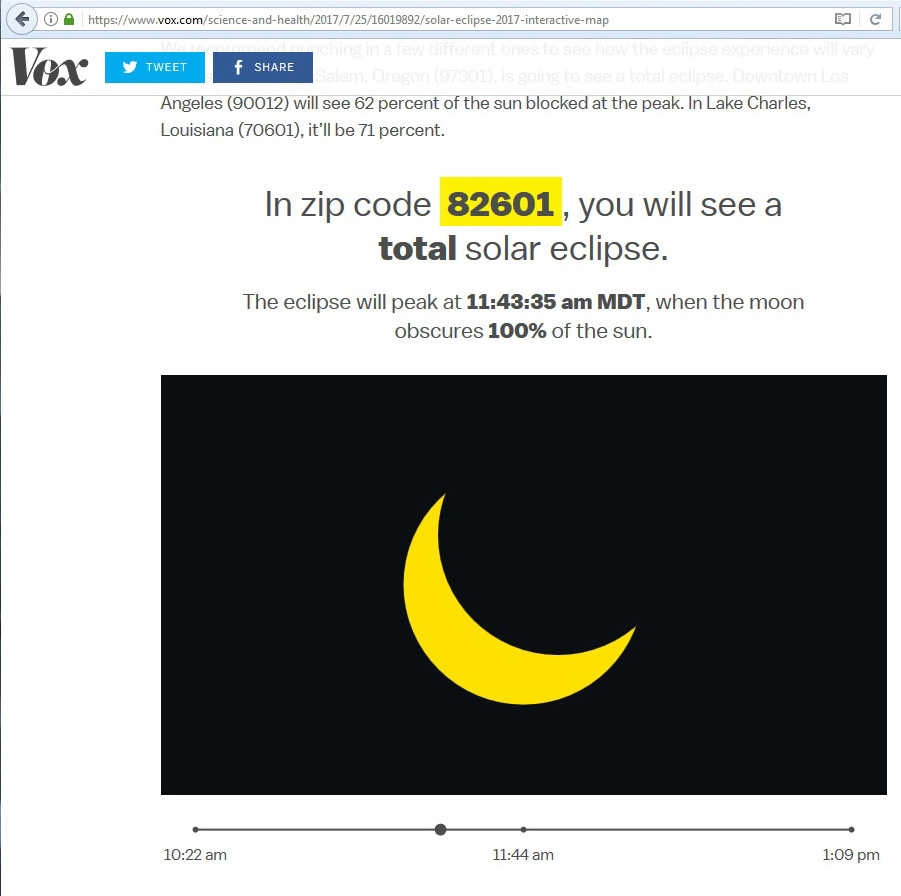 A quick and simple calculator is at VOX. Just enter the Zip Code of your chosen location (Google will give you the Zip Code for just about any city or town in the U.S.) in the yellow box and VOX shows you an animated look at the progress of the eclipse from beginning to end. The beginning of the eclipse, maximum, and end of the eclipse are on the timeline below the animation. No special time conversions are necessary. If you pick a location that will not have a total eclipse, the VOX calculator will show you how far you need to travel to see a total eclipse.
A quick and simple calculator is at VOX. Just enter the Zip Code of your chosen location (Google will give you the Zip Code for just about any city or town in the U.S.) in the yellow box and VOX shows you an animated look at the progress of the eclipse from beginning to end. The beginning of the eclipse, maximum, and end of the eclipse are on the timeline below the animation. No special time conversions are necessary. If you pick a location that will not have a total eclipse, the VOX calculator will show you how far you need to travel to see a total eclipse.
In the screen capture above you see how far the eclipse will have progressed about 15 minutes before totality for one of the Casper Wyoming zip codes.
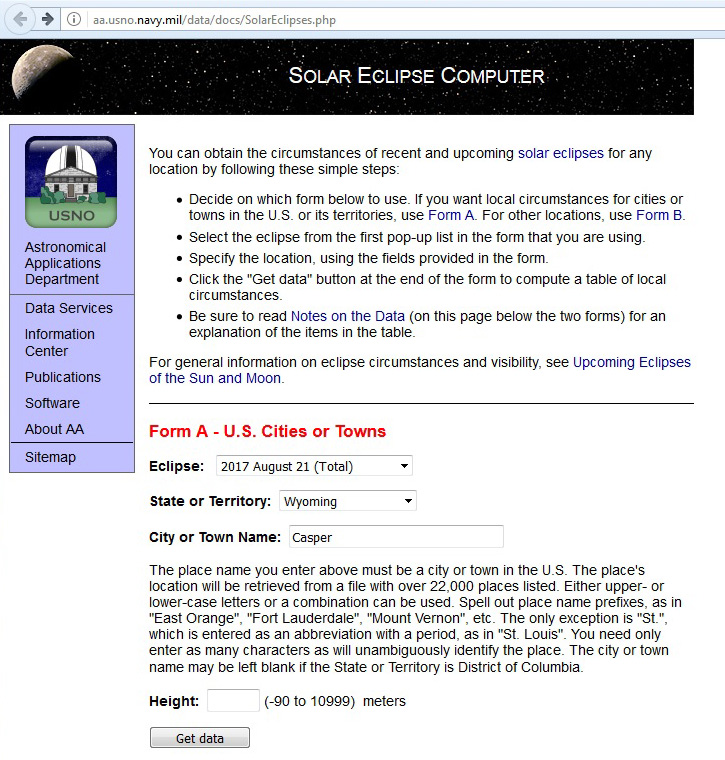 The United States Naval Observatory (USNO) also has an eclipse calculator. Choose the eclipse you want (in this case, 2107 August 21), the state or territory, and the city or town of your choice. If you want to enter the elevation you can do that too, but it isn’t essential. Then click “Get Data”. The USNO calculator is so popular there are times it is difficult to access. Try the link again, or wait and try again later.
The United States Naval Observatory (USNO) also has an eclipse calculator. Choose the eclipse you want (in this case, 2107 August 21), the state or territory, and the city or town of your choice. If you want to enter the elevation you can do that too, but it isn’t essential. Then click “Get Data”. The USNO calculator is so popular there are times it is difficult to access. Try the link again, or wait and try again later.
The information you get will be provided as data, rather than an animation. The information is also more detailed than the VOX calculator. If you pick a location in the path of totality it will give you the beginning and end times of totality.
You will need to convert the times from UT to local time. As an example, 16:22:17.3 is 4:22 pm (plus 17.3 seconds) Universal Time. Subtract the following to get local daylight savings times.
EDT = UT minus 4 hours
CDT = UT minus 5 hours
MDT = UT minus 6 hours
PDT = UT minus 7 hours
Subtracting 6 hours from 16:22 UT is 10:22 am MDT in Casper Wyoming, the same time (rounded off) as at the VOX calculator.
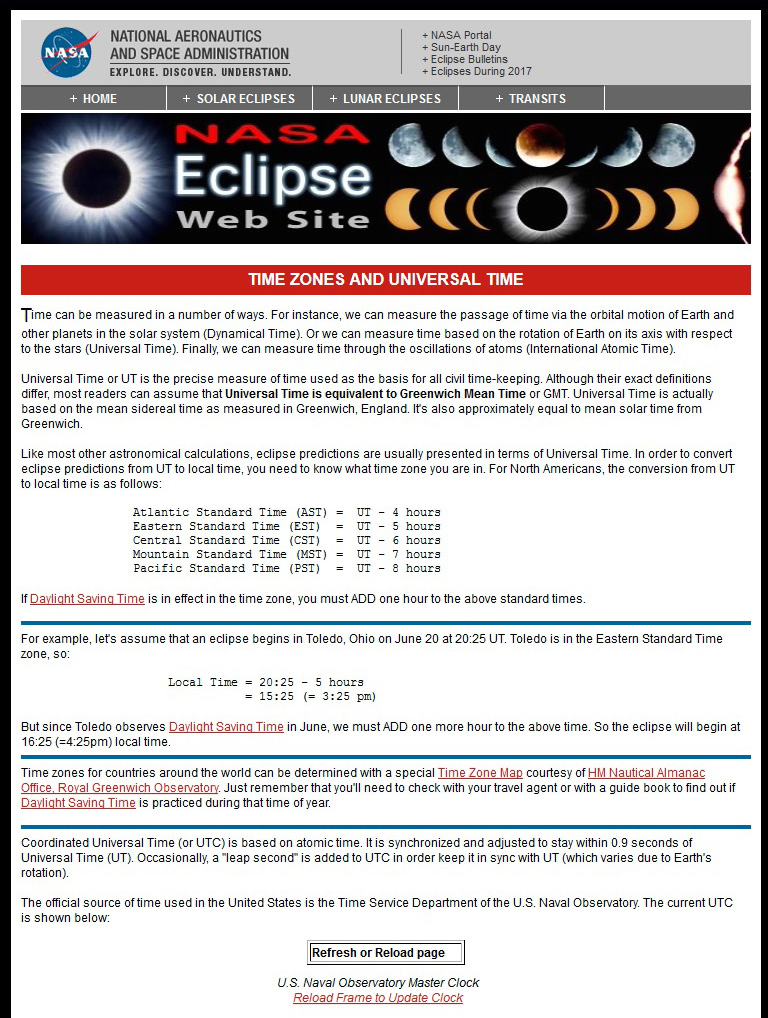 NASA has more information on time conversions.
NASA has more information on time conversions.
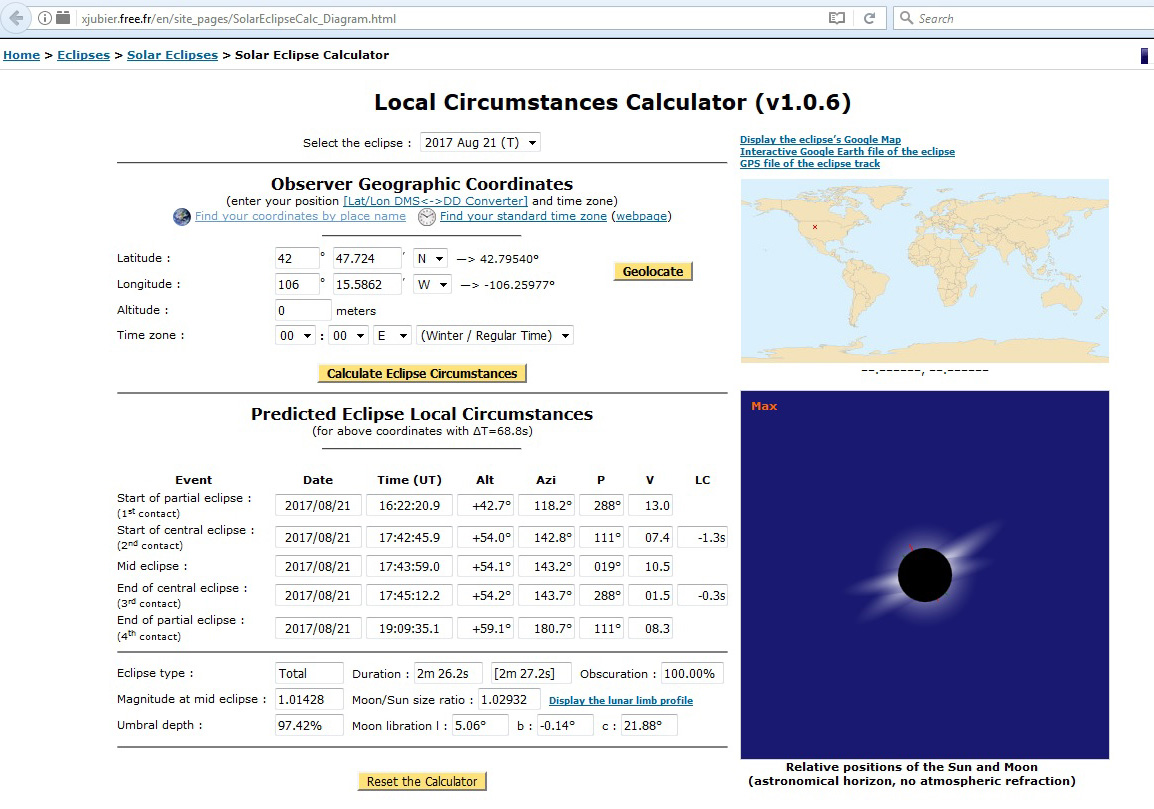 For you techno geeks out there, there is a GPS eclipse calculator. It comes with detailed instructions. Short version: Enter the eclipse you want at the top. Click on the map, enlarge it, and click the location you want. Then transfer the GPS coordinates to the Observer Geographic Coordinates. If you already have coordinates you want to use, enter them manually. Click “Calculate Eclipse Circumstances”. All times are UT and will need to be converted to the local time. A location near Casper Wyoming was chosen for this screen capture.
For you techno geeks out there, there is a GPS eclipse calculator. It comes with detailed instructions. Short version: Enter the eclipse you want at the top. Click on the map, enlarge it, and click the location you want. Then transfer the GPS coordinates to the Observer Geographic Coordinates. If you already have coordinates you want to use, enter them manually. Click “Calculate Eclipse Circumstances”. All times are UT and will need to be converted to the local time. A location near Casper Wyoming was chosen for this screen capture.
The Great American Eclipse Series
The Great American Eclipse Series  – All of my eclipse articles are listed at this link. Check back for new articles as they appear.
More Links
The above calculators are not helpful in finding cities along the path of totality. To do that go to: A Fast Way to Check Out Eclipse Information at the Totality Location of Your Choice.

